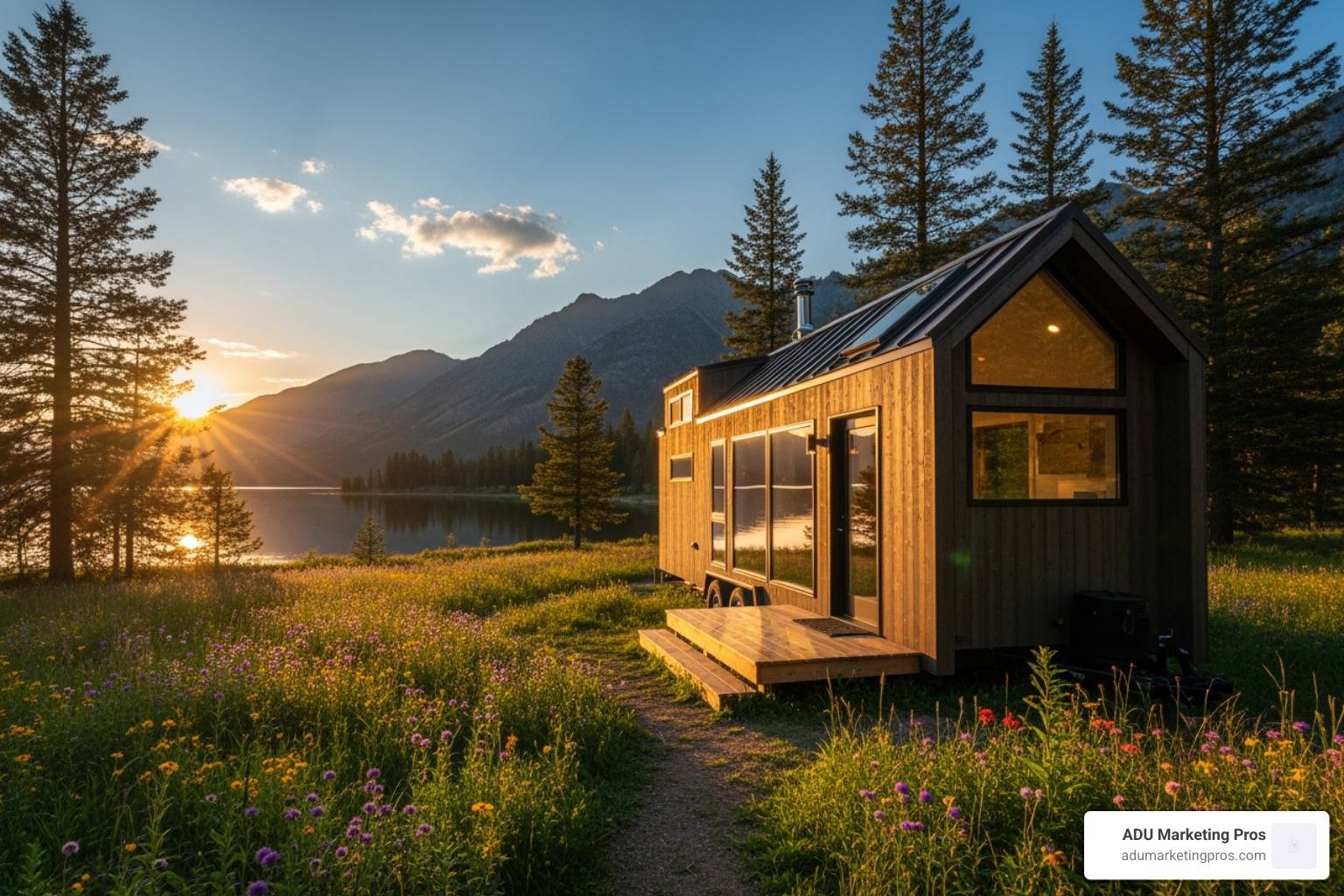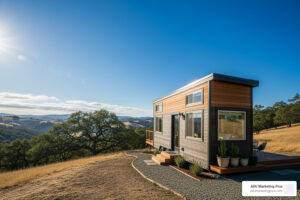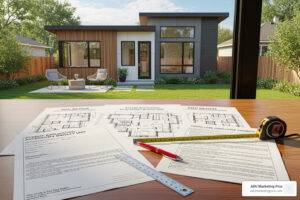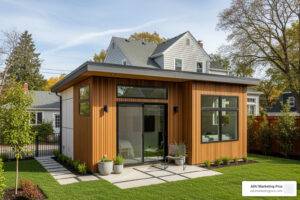Why Finding the Right Tiny Home Builder Matters
A tiny home builder is more than a contractor; they are your essential partner in navigating the journey toward a simpler, more sustainable, and financially intentional lifestyle. These specialized craftspeople and companies are the gatekeepers to the tiny living movement, designing and constructing homes—typically under 400 square feet, but sometimes up to 600—that champion freedom over excess. The philosophy isn’t just about a smaller footprint; it’s about consciously designing a life with less debt, less clutter, and more opportunity for adventure and connection.
The tiny home market has seen explosive growth as individuals and families seek viable alternatives to soaring housing costs and the burden of traditional mortgages. This isn’t a fleeting trend but a fundamental shift in the perception of homeownership. As the popular saying goes, \”Home Is Where You Park It,\” but the movement encompasses much more, from permanent backyard cottages (ADUs) to modular homes that redefine efficiency. Your choice of builder is the single most important decision you will make. It dictates the structural integrity of your home, the quality of the materials, the final cost, and whether your investment will be a source of joy or a series of costly problems. A premier tiny home builder acts as a guide, navigating complex zoning laws, building codes, and design challenges to bring your vision to life.
Top Tiny Home Builder Categories:
- Mobile Builders (THOWs) – The artisans of the road, creating tiny homes on wheels for maximum flexibility.
- ADU Specialists – Experts in building permanent tiny homes as accessory dwelling units, often focusing on local code compliance and property value.
- Custom Builders – Visionaries who work with you to design a one-of-a-kind home from the ground up.
- Modular/Prefab Builders – Efficiency experts who offer pre-designed models with various levels of customization, built in a controlled factory environment.
The right builder ensures your home is not just beautiful but also safe, legal, and durable enough to last for decades. They use premium materials, offer transparent pricing, and provide a clear, collaborative process from the first sketch to the final handover. Whether you dream of a mobile home for cross-country adventures or a permanent ADU for family or rental income, the right tiny home builder makes that dream a tangible, high-quality reality.
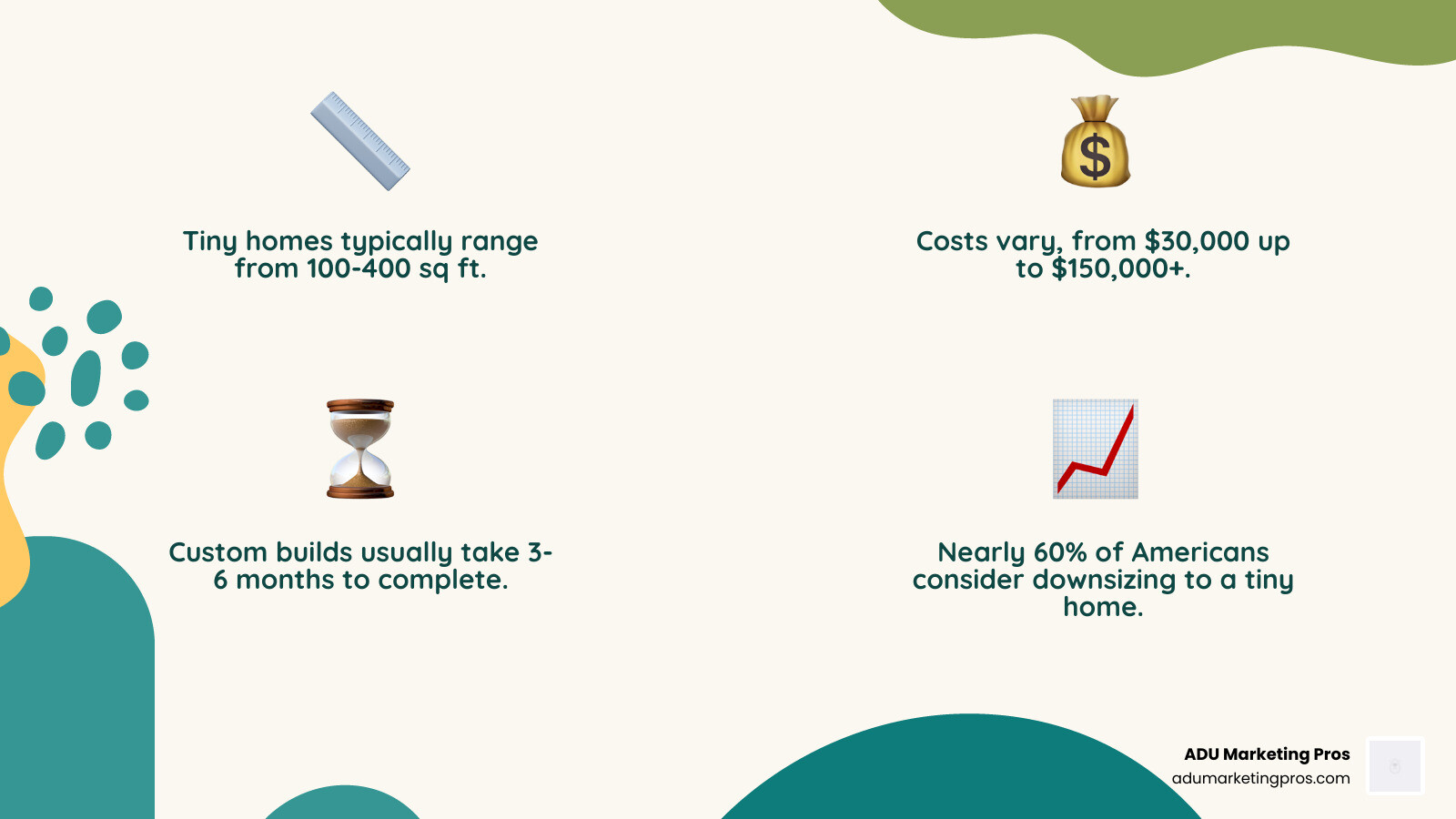
Key Qualities to Look for in a Tiny Home Builder
Choosing your tiny home builder is the most critical decision in your journey. You are not just hiring a constructor; you are entrusting your vision, safety, and significant financial investment to a team that must understand the unique challenges and opportunities of tiny living. A great builder is a blend of artisan, engineer, and trusted advisor.
The Importance of Craftsmanship and Premium Materials
In a tiny home, there is no room for mediocrity. True luxury is measured by thoughtful design and superior quality, not square footage. A reputable tiny home builder is obsessed with the details that ensure longevity and durability. Your home must withstand daily use and, if it’s a THOW, the vibrations and stresses of travel. This demands more than just standard construction.
Look for a builder who is transparent about their material choices:
- Framing: Do they use traditional wood framing or lighter steel studs? Each has implications for weight, insulation, and thermal bridging. Ask about the grade of lumber and fastening methods.
- Insulation: This is critical for comfort and energy efficiency. Discuss options like closed-cell spray foam for its high R-value and rigidity, or natural wool for its moisture-wicking and eco-friendly properties.
- Siding and Roofing: Materials like cedar, engineered wood, and metal are popular for their durability and aesthetic. The builder should explain the maintenance requirements and lifespan of each option.
- Interior Finishes: Quality cabinetry, durable flooring, and resilient countertops are essential in a high-traffic small space. A builder who prioritizes durable materials over cheap, aesthetic-only options is building for the long haul. Their commitment to sustainable building practices also contributes to a healthier living environment. You can learn more about these options in our guide to Eco-Friendly Small Homes.
Design Philosophy and Customization
One of the greatest joys of tiny living is the ability to create a space that is perfectly tailored to your life. Your tiny home builder should be a creative and collaborative partner. Some builders specialize in pre-designed models, which can be a cost-effective and streamlined option. Others excel at fully custom projects. The best builders often offer a hybrid approach, allowing you to modify existing plans or start from a blank slate. A great design process involves optimizing every inch for storage and multi-functionality. This is where skilled designers shine, incorporating features like storage stairs, convertible furniture, and innovative layouts. If your project has unique architectural challenges, you may want to Find Architects in Southern California Who Design Tiny Houses.
Certifications and Legal Compliance
A reputable builder doesn’t just build a beautiful home; they build a legal, insurable, and safe one. This is non-negotiable. For tiny homes on wheels (THOWs), certification is crucial for financing, insurance, and legal placement in many RV parks and communities. The two main certifications are:
- RVIA (Recreational Vehicle Industry Association): This is the most widely recognized certification, ensuring the home complies with over 500 safety standards for electrical, plumbing, HVAC, and fire safety.
- NOAH (National Organization of Alternative Housing): This certification focuses on adherence to ANSI (American National Standards Institute) standards and provides inspections at various stages of the build to ensure structural integrity and safety.
For permanent tiny homes like ADUs, the builder must demonstrate mastery of local building codes, zoning ordinances, and permitting processes. Membership in professional organizations like the Tiny Home Industry Association signals a commitment to industry best practices and ethical standards, which are often guided by bodies like the American National Standards Institute (ANSI).
A Look at Different Tiny Home Types and Their Builders
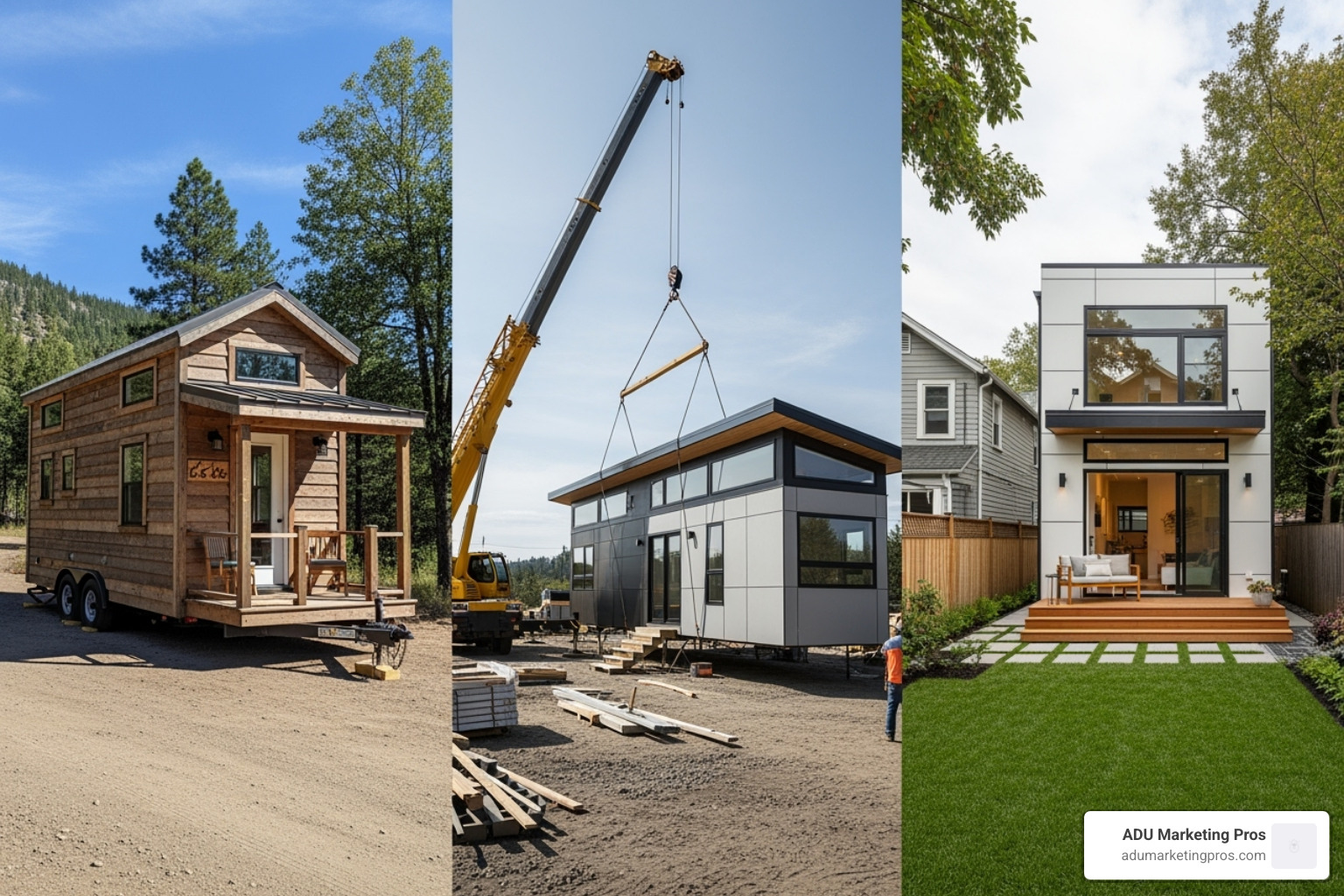
Not all tiny homes are created equal. The term ‘tiny home’ is an umbrella for several distinct structures, each with its own set of benefits, challenges, and legal considerations. Understanding the primary types—mobile, modular, and ADU—is the first step in finding the perfect tiny home builder who specializes in your chosen lifestyle.
Mobile Living: The Classic Tiny Home on Wheels (THOW)
THOWs are the iconic symbol of the tiny house movement, offering unparalleled freedom and mobility. Built on trailer foundations, they are legally considered recreational vehicles (RVs) in most jurisdictions, especially if they are RVIA certified. This classification is key, as it simplifies placement in RV parks and designated communities.
- Key Features: THOWs are engineered for the road. A specialized tiny home builder for THOWs focuses on weight distribution, durable construction that can handle highway speeds, and often incorporates off-grid capabilities like solar panels, water storage tanks, and composting toilets.
- Considerations: The primary challenge is mobility itself. You must have a capable truck with sufficient towing requirements (typically a heavy-duty model for homes over 10,000 lbs). Finding legal, long-term parking can also be a hurdle, though resources are growing. If you’re looking for a place to park, we can help you Find Land for Sale in Southern California for Tiny Houses.
Permanent Solutions: Modular Homes and ADUs
For those who love the tiny ethos but desire stability and a permanent address, modular homes and Accessory Dwelling Units (ADUs) are the answer. These homes are built on permanent foundations and are subject to local building codes, just like traditional houses.
- Modular Homes: These are constructed in sections in a factory setting and then transported to the site for assembly. This process offers high levels of quality control and efficiency. A tiny home builder specializing in modular construction can deliver a home in a fraction of the time it takes for a site-built home.
- Accessory Dwelling Units (ADUs): These are secondary housing units built on the same lot as a primary single-family home. ADUs have become incredibly popular for generating rental income, housing aging parents, or creating a private home office. They can be stick-built versus prefabricated. A stick-built ADU is constructed entirely on-site, which can be advantageous for lots with difficult access. A key benefit of a permitted ADU is the significant increase in property value. The permitting process is more complex than for a THOW, but it results in a fully legal, appreciating asset. To learn more, Understand the difference between an ADU vs. Tiny House.
Finding the Right Tiny Home Builder for Your Needs
Your choice of home type dictates your choice of builder. A master THOW builder may not have the experience to navigate the complex permitting of an ADU, and vice versa. When vetting a tiny home builder, focus on their builder specialization. Scrutinize their portfolio to ensure their aesthetic and quality align with your vision. Read client testimonials and ask for references to gauge their communication, reliability, and ability to stay on budget. Be crystal clear about your project scope—whether you need a standard model or a highly custom design—to ensure you find a builder who is the perfect fit for your dream.
Understanding the Custom Build Process Step-by-Step

Embarking on a custom tiny home build is an exhilarating process. A professional tiny home builder will demystify the journey, guiding you through each stage with transparency, collaboration, and expert project management. Here’s a detailed look at what you can expect.
Step 1: Consultation, Design, and Planning
This initial phase is the foundation of the entire project. It’s a deep, collaborative dive where your vision begins to take concrete form. It involves more than just a casual chat.
- Initial Consultation: You’ll discuss your lifestyle, daily routines, aesthetic preferences, must-have features, and long-term goals. A great builder will ask probing questions to understand not just what you want, but why you want it.
- Budgeting and Feasibility: This is where transparency is key. You’ll establish a realistic budget, and the builder will provide a detailed estimate outlining what is included in the base price and the cost of potential upgrades. This should also include a discussion about contingency funds (typically 10-15%) for unforeseen costs.
- Layout Planning & 3D Modeling: The builder’s design team will translate your ideas into initial floor plans. This is an iterative process. Most modern builders use 3D modeling software, which is a game-changer. It allows you to virtually walk through your home, sense the scale, and make adjustments to the layout planning and material selection before a single piece of lumber is cut. For creative sparks, you can explore our collection of Small Houses.
Step 2: Construction and Milestones
With a signed contract and approved design, the build begins. A typical THOW takes 3-6 months, while a permitted ADU can take 8-12 months, including the permitting phase. The process unfolds in clear construction stages:
- Foundation/Trailer Prep: For a THOW, this involves receiving and preparing the custom trailer. For an ADU, it means site work and pouring the foundation.
- Framing and Sheathing: The skeleton of the home goes up, defining its shape and structure.
- Rough-ins: This is a critical stage where plumbing, electrical wiring, and HVAC ducts are installed within the walls.
- Insulation and Interior Walls: The home is insulated, and drywall or wood paneling is installed.
- Finishing: The final stage includes flooring, painting, cabinetry installation, countertops, fixtures, and appliances.
A professional tiny home builder provides regular progress updates (often with photos and videos) and maintains rigorous quality control at every step. They should also welcome scheduled client visits to see the progress firsthand.
Step 3: Financing, Inspection, and Handover
As construction wraps up, the final logistical pieces fall into place.
- Finalizing Financing: You’ll work with your lender to finalize the loan approval and schedule the final payments as per your contract.
- Final Inspection: You will conduct a thorough walk-through with your builder. This is your opportunity to inspect every detail, test all systems, and create a “punch list” of any items that need correction.
- Handover: Once the punch list is complete and final payment is made, you’ll receive the keys, all necessary documentation (including warranties), and for THOWs, the title and registration paperwork.
| Financing Option | Best For | Key Benefits & Considerations |
|---|---|---|
| RV Loans | Certified THOWs | Lower interest rates than personal loans; requires RVIA certification. |
| Personal Loans | Any tiny home type, especially DIY or uncertified builds | Quick approval, no collateral needed, but often has higher interest rates. |
| Builder Financing | Custom builds with established builders | Streamlined process; the builder has a relationship with the lender, simplifying paperwork. |
| HELOC/Home Equity Loan | ADUs or tiny homes on owned land | Uses equity in an existing property; offers lower rates but puts the property at risk. |
For specialized financing, partners like 21st Mortgage Corporation offer solutions specifically designed for manufactured and tiny home buyers.
Key Qualities to Look for in a Tiny Home Builder
Choosing your tiny home builder is the most critical decision in your journey. You are not just hiring a constructor; you are partnering with a team that must understand your vision, value quality, and steer the unique challenges of tiny living.
The Importance of Craftsmanship and Premium Materials
True luxury in a tiny home is measured by thoughtful design and quality, not square footage. A reputable tiny home builder focuses on details that ensure durability. Your home needs to withstand daily use and, if it’s on wheels, the rigors of travel. This requires robust framing, durable siding, high-quality insulation, and resilient interior finishes. Look for a builder who prioritizes:
- Attention to detail in every joint and finish.
- Durable materials chosen for longevity, not just aesthetics.
- Time-tested blueprints that ensure structural integrity.
- Sustainable building practices for a healthier home. You can learn more about Eco-Friendly Small Homes.
Design Philosophy and Customization
One of the most exciting aspects of tiny living is personalization. Your tiny home builder should be a creative partner, helping translate your lifestyle into a functional space. Great builders offer both pre-designed models and extensive customization, allowing you to tailor everything from the layout to the finishes. The best client collaboration involves optimizing every inch for storage and livability, often with the help of skilled designers. If you need specialized design help, you can Find Architects in Southern California Who Design Tiny Houses.
Certifications and Legal Compliance
A reputable builder doesn’t just build a beautiful home; they build a legal and safe one. For tiny homes on wheels (THOWs), certifications from the RVIA (Recreational Vehicle Industry Association) or NOAH (National Organization of Alternative Housing) are crucial for insurance, financing, and legal placement. For permanent tiny homes like ADUs, adherence to local building codes is non-negotiable. Membership in groups like the Tiny Home Industry Association also indicates a commitment to professional standards, which are guided by bodies like the American National Standards Institute (ANSI).
A Look at Different Tiny Home Types and Their Builders
The tiny home movement isn’t a one-size-all solution. There are distinct types of tiny homes, each suited to different lifestyles and legal contexts. Understanding these types is key to finding the right tiny home builder for your specific needs.
Mobile Living: The Classic Tiny Home on Wheels (THOW)
Tiny Homes on Wheels, or THOWs, are perhaps the most iconic representation of the tiny house movement. These homes are built on trailer foundations, allowing them to be moved from one location to another, offering unparalleled freedom and flexibility. Many THOWs are designed to be classified as RVs, which can simplify legal parking and travel. The benefits of mobile living are clear:
- Mobility benefits: You can chase the seasons, explore new regions, or simply move your home if your circumstances change.
- RV classification: This can make financing easier and provide more options for parking.
- Off-grid capabilities: Many THOWs are designed with solar panels and composting toilets for independent living.
- Towing requirements: You’ll need a suitable vehicle to tow your tiny home.
If you’re considering a mobile tiny home, you’ll also need to think about where you’ll park it. We have resources to help you Find Land for Sale in Southern California for Tiny Houses.
Permanent Solutions: Modular Homes and ADUs
While THOWs offer mobility, many people seek tiny living solutions that are permanently affixed to a property. This is where modular homes and Accessory Dwelling Units (ADUs) come into play. These structures are built on permanent foundations and are subject to traditional building codes.
- Modular Homes: These are factory-built homes that are transported to a site and then assembled and permanently installed on a foundation.
- Accessory Dwelling Units (ADUs): ADUs are secondary housing units on a single-family residential lot, ideal for generating rental income or housing family members.
A key distinction here is “stick-built vs. prefabricated.” Stick-built ADUs are constructed directly on your property, which can avoid delivery challenges and often results in higher appraisal values. Understanding the differences between these types is crucial. We can help you Understand the difference between an ADU vs. Tiny House.
Finding the Right Tiny Home Builder for Your Needs
With so many options, how do you choose? It comes down to aligning the tiny home builder’s specialization with your specific project. Review their portfolios to see if their designs resonate with your aesthetic. Read client testimonials to learn about their customer service and reliability. Finally, ensure their communication style is responsive and transparent.
Understanding the Custom Build Process Step-by-Step
Building a tiny home is an exciting journey, and understanding the process from start to finish will help you feel confident and prepared. A reputable tiny home builder will guide you through each stage, ensuring transparency and collaboration.
Step 1: Consultation and Design
This is where your tiny home dream begins to take shape. It’s a collaborative phase where your ideas meet the builder’s expertise.
- Sharing your vision: Discuss your lifestyle, needs, and aesthetic preferences with your chosen tiny home builder.
- Budgeting: Be upfront about your budget. A good builder will help you understand what’s feasible and offer transparent pricing.
- Layout planning: Your builder will work with you to design a floor plan that optimizes every square inch.
- Material selection: You’ll choose the materials that reflect your style and meet your durability requirements.
- 3D modeling: Many builders use 3D renderings to help you visualize the space before construction begins.
For more ideas and inspiration, check out our insights on Inspiration for Small Houses.
Step 2: Construction and Milestones
Once the design is finalized, the building begins. The average build timeline for a tiny home is 3 to 6 months, while a permitted ADU can take 8-12 months. You’ll witness distinct construction stages, from foundation prep to interior finishes. Reputable builders have rigorous quality control checks and provide regular progress updates.
Step 3: Financing and Finalizing Your Project
As construction nears completion, attention turns to financing and the final steps.
- Loan approval: Ensure your financing is approved and ready. Many builders partner with lenders to simplify the process.
- Final inspection: You’ll conduct a thorough final inspection with your builder to ensure everything meets specifications.
- Handover: Once payment is complete and the inspection is passed, you’ll receive the keys to your new home.
- Title and registration: For THOWs, you’ll handle title and registration similar to an RV.
Here’s a comparison of common financing options:
| Financing Option | Description | Typical Use |
|---|---|---|
| RV Loans | Available for THOWs that meet RVIA standards. | THOWs classified as RVs |
| Personal Loans | Unsecured loans based on your creditworthiness. | Any tiny home type |
| Builder Financing | Some builders partner with specific lenders. | Any tiny home type |
| HELOCs / Renovation Loans | Uses existing home equity for financing. | ADUs, permanent tiny homes |
You can also explore options with specialists like 21st Mortgage Corporation.
Essential Factors to Consider Before You Build
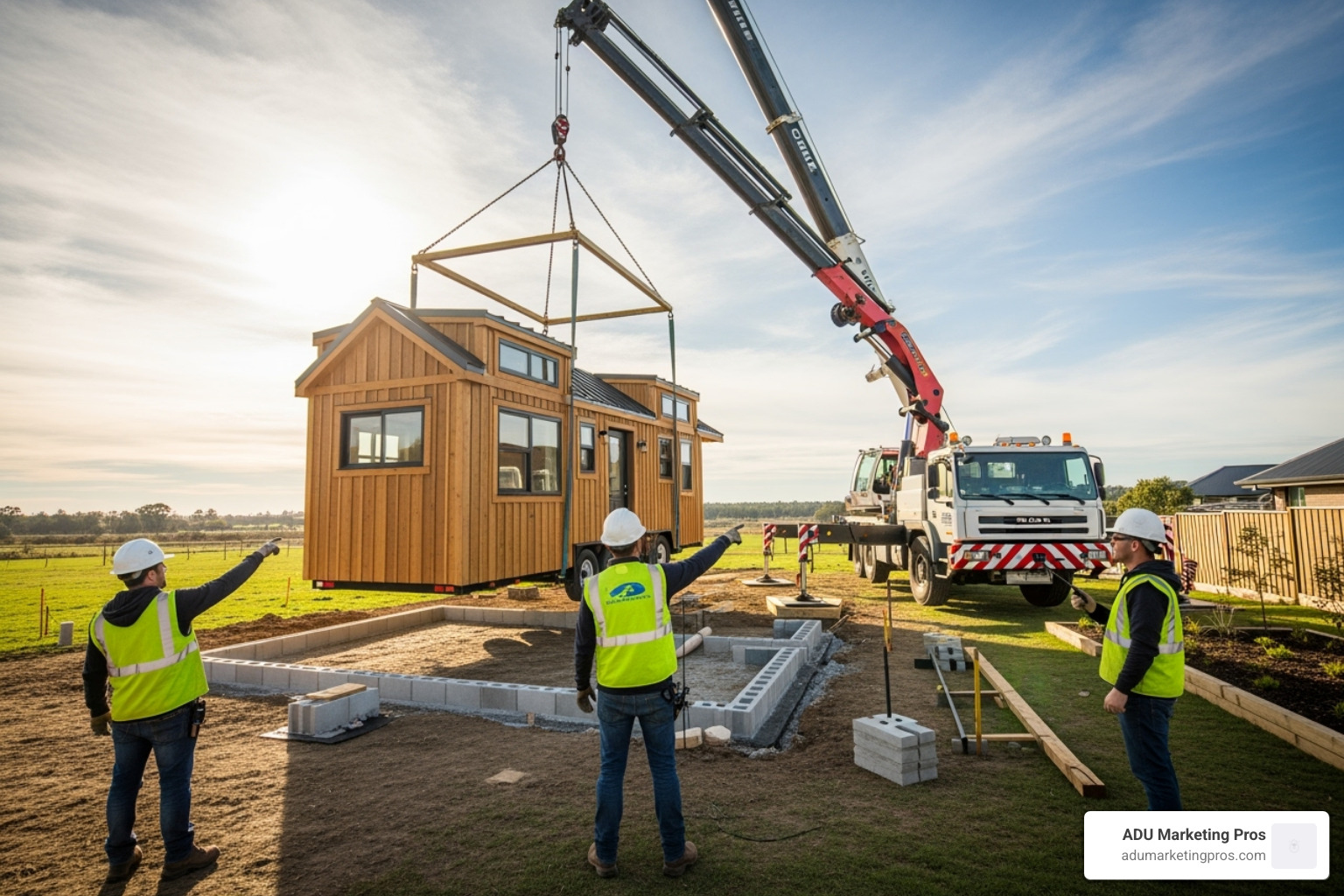
Building a tiny home is an investment in a new way of life, but overlooking crucial planning steps can lead to unexpected costs and legal headaches. Before you fall in love with a floor plan, it’s vital to address the practical realities of cost, zoning, and builder selection.
Understanding the Full Cost of a Tiny Home
The advertised base model price from a tiny home builder is only the beginning. A realistic budget must account for a wide range of additional expenses. Failing to plan for these can quickly derail your project.
- Upgrades and Customization: The features that make a tiny house feel like home—high-end appliance packages, custom cabinetry, premium flooring, or unique window configurations—are rarely included in the base price. These custom upgrades can add tens of thousands of dollars.
- Site and Delivery: For any tiny home, you’ll have delivery fees, which can be substantial depending on the distance and complexity of the move. For permanent structures like ADUs, you must budget for extensive site preparation, including grading, excavation, and foundation work.
- Utilities and Permits: Connecting to the grid is a major expense. This includes costs for trenching, utility hookups (water, sewer/septic, electricity), and associated impact fees from local municipalities. The permit fees for an ADU alone can run into thousands of dollars.
Always insist on a detailed, line-item quote from your builder to understand the true, all-in cost. You can Browse Small Houses for Sale to get a general sense of market prices, but remember to factor in these additional expenses.
Navigating Zoning and Placement Challenges
\”Where can I legally put my tiny home?\” is the single most critical question in the tiny living journey. Local ordinances vary dramatically from one city or county to the next.
- For ADUs: The legal landscape is improving. Many states, led by California, have passed laws to streamline ADU regulations and encourage their development. However, navigating the local planning department still requires expertise. A builder with deep local knowledge is invaluable.
- For THOWs: The situation is more complex. Options generally include tiny home communities, which are specifically zoned for tiny living, and RV parks, though some have restrictions on the age/look of the unit or length of stay. Placing a THOW in a backyard for full-time living often falls into a legal gray area, so thorough research is essential. Explore our guides on Places in Southern California That Allow Tiny Houses and the specific challenges in dense urban areas like Tiny House San Francisco.
Choosing a Reputable Tiny Home Builder in California
In a highly regulated and competitive market like California, local expertise is not just a benefit; it’s a necessity. A California-based tiny home builder will have critical experience with:
- Local Building Codes: Navigating the specific requirements of different cities and counties.
- Title 24: California’s strict energy efficiency standards, which impact insulation, window selection, and HVAC systems.
- Permitting Processes: Established relationships with local planning departments can save months of delays.
Always verify a builder’s credentials. Check their builder licenses on the Contractors State License Board (CSLB) website and confirm they carry adequate liability and workers’ compensation insurance. Review their portfolio of past projects for consistent quality and craftsmanship. Our guides on Tiny House Builders in California and specifically Tiny House Builders in Southern California can help you find a qualified professional, including specialists like San Francisco Tiny House Builders.
Frequently Asked Questions about Tiny Homes
Here are detailed answers to some of the most common questions we receive from people exploring the tiny home lifestyle. A good tiny home builder should be able to answer these and many more.
How long does it take to build a tiny home?
The construction timeline depends heavily on the type of home and the level of customization. A custom Tiny Home on Wheels (THOW) from an established builder typically takes 3 to 6 months from the start of construction to completion. This does not include the design phase, which can take several weeks. For a permanent Accessory Dwelling Unit (ADU), the entire process is longer due to the need for site work and local government approvals. You can expect an ADU project to take 8 to 12 months from the initial design consultation to receiving your certificate of occupancy.
How much does a typical tiny home cost?
This is the ultimate \”it depends\” question. Costs can range from as low as $30,000 for a very basic, smaller DIY or shell model to $150,000 or more for a high-end, fully custom home from a premium builder. The final price is driven by several factors: square footage, the quality of materials (e.g., standard vinyl windows vs. custom wood-clad windows), the complexity of the design, the level of finish, and the builder’s reputation and overhead. It is crucial to remember that this price often doesn’t include the cost of land, site preparation, utility hookups, delivery, or permits, which can add another $20,000 to $100,000+ to the total project cost.
Can I get financing for a tiny home?
Yes, financing a tiny home is more accessible than ever, but the options differ by home type. For THOWs, the most common routes are RV loans and personal loans. To qualify for an RV loan, the home must be certified by the RVIA, which is a major reason to choose a certified builder. Personal loans have higher interest rates but are more flexible. For permanent ADUs built on a foundation, financing is more traditional. Homeowners can use a Home Equity Line of Credit (HELOC), a home equity loan, or a cash-out refinance on their primary residence. Many builders also cultivate relationships with specific lenders, like 21st Mortgage Corporation, to offer streamlined financing solutions directly to their clients.
How do I insure a tiny home?
Insurance is critical and, like financing, depends on the type. For RVIA-certified THOWs, you can typically get RV insurance, which covers liability and property damage, both when parked and in transit. For self-built or uncertified homes, getting insurance can be much more difficult. For permanent ADUs, the process is straightforward: you extend your existing homeowner’s insurance policy to cover the new structure as an ‘other structure on property’ or, if it’s a rental, add a landlord policy.
Conclusion
Your journey to a tiny dream home is a significant and exciting step toward a life of greater financial freedom, sustainability, and intention. The single most critical decision in this entire process is choosing the right tiny home builder. This choice transcends simple construction; it’s about forging a partnership with a team that understands your vision, respects your investment, and possesses the expert craftsmanship to execute your dream flawlessly.
The best builders are defined by their unwavering commitment to quality craftsmanship, their practice of transparent communication, and their portfolio of proven, durable designs. They are experts in the complex world of legal compliance, skillfully navigating everything from RVIA certifications for mobile homes to the intricate local building codes that govern permanent ADUs. This professional diligence is what protects your investment, ensures your safety, and transforms a set of blueprints into a durable, beautiful sanctuary.
As the tiny home movement continues to mature, the distinction between a hastily assembled house and a thoughtfully crafted home becomes ever more apparent. Success lies in performing your due diligence and selecting a builder who values long-term quality over short-term profits. For construction firms dedicated to this standard of excellence, ADU Marketing Pros offers specialized marketing services to connect you with clients who appreciate and seek out superior craftsmanship.
If you are ready to take the next step and build a high-quality tiny home in the Los Angeles area, we can help you Find your ideal ADU builder in Los Angeles who shares your commitment to building something truly exceptional.

